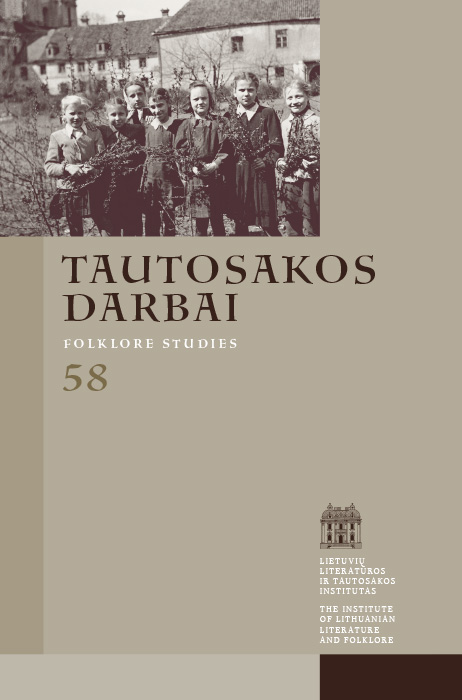“What Is True Is Not a Lie”: Conceptualization of Truth and Lie in Lithuanian Proverbs
Abstract
The article presents a linguistic cultural analysis of Lithuanian proverbs and sayings about truth (tiesa) and lie (melas). The analysis aims at restoring the linguistic cultural picture of these values in Lithuanian paremias. Proverbs and sayings are especially informative for the analysis of linguistic worldview. Being used by the people of different age, education and social background, they are an integral part of a national cultural life. Proverbs are repetitive, passed from generation to generation and thus forming cultural stereotypes and linguistic worldview. They contain a lot of information on the values upheld by a certain community. The analysis is based on S-A-T methodology developed by Lublin school of ethnolinguistics and presents the following linguistic cultural image of Lithuanian truth and lie: truth and lie are opposites placed on the opposite sides of the axiological axis. Lie is a great evil to be avoided as much as possible. Lies can be numerous and different, depending on who is lying and for what reason. Lie can be of different degree and can be measured. Lie is usually more attractive than truth and can be necessary to extricate people from difficult situations; nevertheless, lie is unconcealable. Lie is often personified; it is presented as a living and moving object, which is faster than truth. Truth is a virtue to be followed and always observed. Truth is usually unique and integral, always obvious and clear. However, truth should be viewed with caution, as the semantic boundary between truth and lie is very vague: truth can be unjust (it is particularly prone to succumbing to force or money), and it can become a lie. Truth is often unreasonable and dangerous and usually unattractive. Truth is often personified and presented as blind.
Downloads
Most read articles by the same author(s)
- Lina Būgienė, Martynas Vingrys, Irena Snukiškienė, Dalia Urbanavičienė, Gražina Kadžytė, Jurga Sivickaitė-Sadauskienė, Information , Tautosakos darbai: Vol. 64 (2022)




